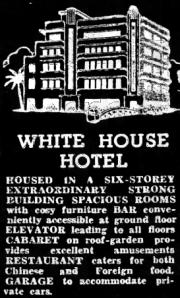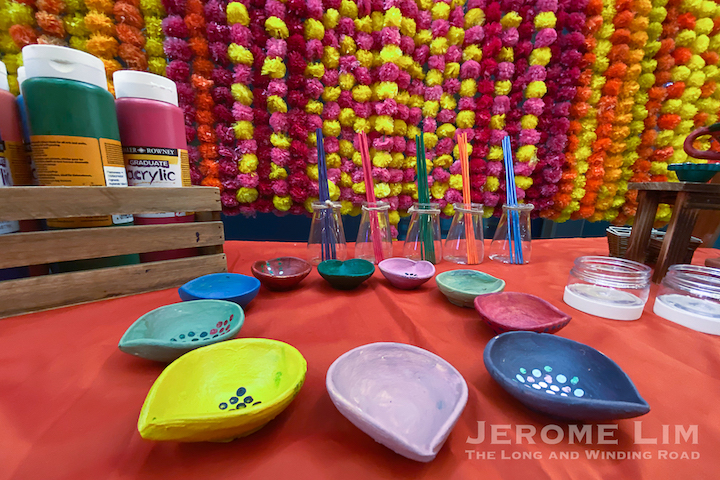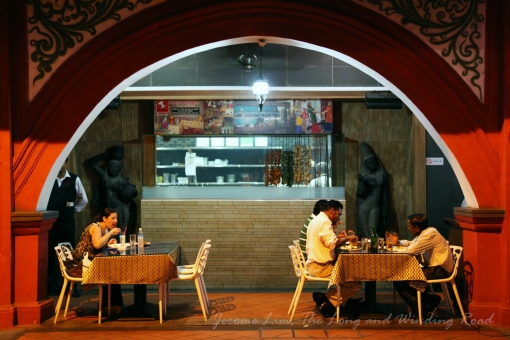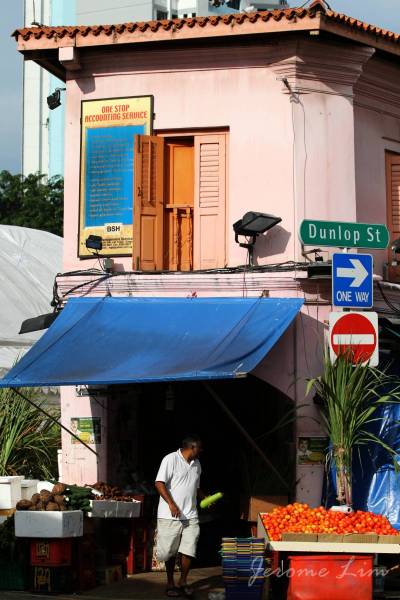Continuing on our back to school walk from Thieves Market, my old schoolmates and I crossed the busy Jalan Besar to what seems a world apart from the rest of Singapore: the charming area known to us as Little India. Set just a stone’s throw away from the city centre and its skyscrapers that dwarf much of the older areas around it, this quite delightful part of Singapore is one that I have always enjoyed wandering around. Bounded roughly by Jalan Besar to the east, Sungei Road to the south, Race Course Road to the west, and Kitchener Road to the north, the main part of the Little India area is alive with the colour and activity that much of the streets of Singapore seems to be missing. The area had mostly developed in the late 1800s, when the cattle rearing trade that thrived from the watering holes that the swamps in the area had provided. Many of the names used for and in the area in fact bear the evidence of this, Belilios Road and Lane being named after one of the pioneers of the trade, I.R. Belilios, as well as obvious names such as Buffalo Road, Kerbau Road and Kandang Kerbau. The emergence of this trade, one that was dominated by immigrants from the Indian sub-continent, attracted many other economic migrants from the sub-continent to the area transforming it into a hub of economic activity as well as a home for many Indians immigrants.

Crossing Jalan Besar to Little India, we passed this beautiful pre-war shop house at the corner of Jalan Besar and Veerasamy Road.

A newspaper advertisement for the White House Hotel at the height of its glory.
The route that we had taken to Sungei Road had taken us within sight of an Art Deco style building at the corner of Jalan Besar and Sungei Road. This had once been the White House Hotel, a building that I have never failed to notice. Its distinctive green windows had long reminded me of the panes of the windows and doors that was with me for the six years I was at St. Michael’s School. The building also served as a marker of the midway point of a journey that I would take once a week in my lower secondary school days. Then I would attend technical lessons at McNair Road in the Rumah Miskin area, and getting to school after workshop classes involved a ride on the bus that would take me through Jalan Besar, Bencoolen Street and Bras Basah Road. The building is also positioned such that it also serves as a marker for the south-eastern corner of Little India, and back when I was in school, the hotel had seemed to have seen much better days. These days, having been given a makeover and painted a pleasant light pastel blue, the hotel which is run by the budget chain Hotel 81, has some of the dignity that the building perhaps deserves for its architectural style restored.

The Art Deco styled former White House Hotel, which might have once been a rather grand looking hotel marks the end of Jalan Besar at its junction with Sungei Road. As a schoolboy I used to pass this building on the bus that would take me from the technical workshops at McNair Road to the school I attended on Bras Basah Road, marking the midway point of the bus ride.
Making our way through Veerasamy Road, we noticed that much of the area now seems to be dominated by the rag-and-bone trade … the evidence of which is not difficult to notice: small trucks buried in paper and cardboard pulling alongside shop houses that overflow with used items; weighing scales chained to posts on the streets; trolley loads of cardboard boxes being pushed around by elderly folk, are within sight everywhere.

The area on both sides of Jalan Besar seemed to be dominated by the scrap and rag-and-bone trade ...

Evidence of the rag-and-bone trade ... a weighing scale for weighing newspapers and cardboard boxes.

Trolleys of flattened cardboard boxes being pushed through the streets of Little India are a common sight.
The quick walk through the very colourful streets also took us through Kampong Kapor Road. Turning left into it from Veerasamy Road, where we could see the Kampong Kapor Methodist Church, somehow out of place in the surroundings. Built in 1930, the Art Deco church building was built to house a growing congregation which had outgrown the original church building in which the church had started. The original building was incidentally the Middle Road Church building that is now part of Sculpture Square. It was where we had earlier in our walk, stumbled upon Ngim Kum Thong’s very intriguing art exhibition.

The streets in Little India are washed in colour.

Kampong Kapor Methodist Church on Kampong Kapor Road. The church started as the Middle Road Church, the building of which is now Sculpture Square.


More of the Art Deco style Kampong Kapor Methodist Church building built in 1930.
Continuing on our walk through Cuff Road, it was interesting to notice that what is still essentially an Indian enclave, shows signs of a strong Chinese immigrant presence. Many of those involved in the rag-and-bone business are in fact Chinese nationals. As well as that, there was also evidence of some western influences. Where else would you see a sign over what is essentially an Indian café selling a fare of fried Indian snacks such as pakoras and samosas as “Hot Chips”?

The area since has through its history been a magnet for migrants from India.

These days, Little India also attracts migrant workers from other parts of the world as well.

Little India these days is also a mix of east and west.

The sight of newspapers and magazines displayed on lines was once a common sight all over Singapore, and is today still commonly seen in Little India.

A five foot way - typical of pre-war buildings in Singapore ... now serves as a convenient parking space for all kinds of small vehicles ...
Moving back northwards along Serangoon Road, we crossed over the road near its junction with Belilios Road to the Sri Veeramakaliamman Temple. The temple is one of the oldest Hindu temples in Singapore, the history of which is well summed up in the temple’s website. The temple is dedicated to Kaliamman, more commonly referred to as Kali, the Destroyer of Evil, a popular goddess with the workers who were said to have been involved in the construction of the temple in the late 1800s.

The Sri Veeramakaliamman on Serangoon Road is one of the oldest Hindu temples in Singapore, having been constructed in the late 1800s.

Inside the Sri Veeramakaliamman temple.

A Hindu priest inside the Sri Veeramakaliamman temple.


Floral garlands and offerings on sale at Belilios Road next to the Sri Veeramakaliamman temple.
After a short break at Chander Road where we had Masala tea at Masala Hut, we then made our way to Tekka Market, passing by the North Indian Shree Lakshminarayan Temple, and walking through the mall at Belilios Lane / Krebau Road, through the small lane by the former residence Tan Teng Niah, and out to Buffalo Road. This took us across to the HDB complex that houses the new Tekka Market. The original Tekka Market was actually located across Serangoon Road from where the current market is, and had when I was a child, been a source of fascination for me. I remember the shopping trips there with my mother during which I would take in the wonderful aroma of spices and look forward to seeing the mutton sellers towering over their huge chopping blocks which had been cut from large logs. So, I was pleasantly surprised to see that smaller versions of these chopping blocks are still used by some of the mutton sellers – the only difference being that they stand firmly on the ground and do not seem to tower over me any more. That certainly give me a shot of nostalgia as we continued to wander around the market.



Scenes from the colourful shophouses of Chander Road ...

A liquor store on Chander Road.

Beet Root on display at Buffalo Road.

Tekka Market today ...

Fresh fish at Tekka Market.

The log chopping blocks that I was very taken with as a child.
Out of Tekka Market, we decided to head back to school again by MRT. This was not before we encountered a long snaking queue that we might have mistaken for one of the queues that offer a pot of gold to a lucky punter in one of the many lotteries that we have here. These queues get especially long when the prize on offer is not just a pot of gold, but the equivalent of several pots to the tune of a few million dollars. Thinking it was probably a queue for one of these, we were quite surprised to see that it wasn’t. The queue had in fact snaked its way to a POSB ATM machine! I had only prior to this, seen monster ATM queues during the seasons of shopping frenzy, that form in the Orchard Road area, and from my recollection, I don’t think any of these were anywhere as long as the one I was looking at that day – perhaps only a third the length of what I was seeing!

The long snaking queue at the POSB ATM ...







































































































































































































































































































